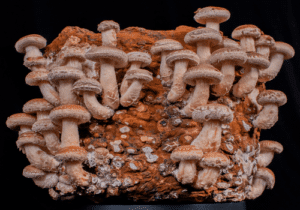
SHIITAKE: Grow Kit Instructions
Learn how to grow Shiitake mushrooms using the Myterra Labs
RECEIVE 10% OFF ON YOUR FIRST ORDER! – USE CODE: WELCOME10
Mushrooms are a popular ingredient in many cuisines around the world, loved for their unique texture and earthy flavor. While many of us may have heard the term “harvesting mushrooms,” it may not be entirely clear what this process entails and whether or not mushrooms continue to grow after being harvested. In this blog post, we’ll explore the answer to this question in detail.
To begin, let’s first discuss the process of harvesting mushrooms. When mushrooms are ready to be picked, they are typically cut off at the base of the stem. This process is done carefully to avoid damaging the rest of the mushroom or the surrounding substrate and mycelium. After being harvested, mushrooms are then sorted and packaged for sale.
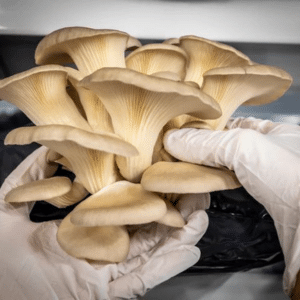
The short answer is that once a mushroom fruiting body has been harvested, it will not continue to grow larger. This is because the mushroom is a fruiting body, similar to a fruit on a tree. Just like how an apple will not continue to grow once it has been picked, a mushroom will not continue to grow once it has been harvested.
However, it’s important to note that the mycelium, which is the vegetative part of the mushroom, can continue to grow from the mushroom after the fruiting body has been harvested. This is because the mycelium is the part of the mushroom that is responsible for absorbing nutrients and breaking down organic matter. In fact, the mycelium can continue to grow and produce new fruiting bodies under the right conditions.
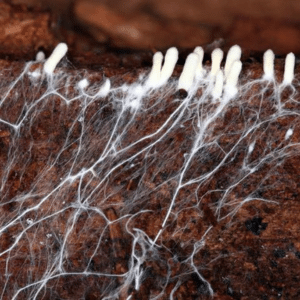
In this blog post, we will explore three ways that mushrooms can continue to thrive after being harvested: adding them to compost, burying them in your yard, and using a small piece of the fruiting body to clone the mushroom/mycelium on agar.
Adding harvested mushrooms to your compost is a great way to enhance the decomposition process. This is because mushrooms play an important role in breaking down organic matter and returning nutrients to the soil. By adding mushrooms to your compost, you are providing a rich source of nutrients for the microorganisms that help break down organic matter into nutrient-rich soil. Placing mushrooms into your compost triggers the mushroom into a vegetative state, meaning that mycelium will grow from the mushroom, provided that there is adequate moisture. For example, if you were to leave some scraps of oyster mushroom in your compost bin that receives coffee grounds and other waste, you would notice that the mushroom pieces would look fuzzy after a few days. This fuzz is actually the mycelium of the mushroom and this mycelium would be responsible for speeding up the decomposition in your compost.
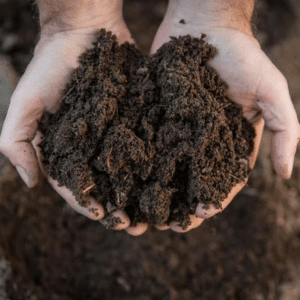
Burying harvested mushrooms in your yard is another way that you can continue to grow mushrooms. The mycelium that produces mushrooms can continue to grow and regenerate under the right conditions. If you bury harvested mushrooms in an area of your yard with the correct nutrients and moisture, it is possible for the mycelium to continue to grow and produce new fruiting bodies after a few months. If you choose to do this, find a spot that does not receive direct sunlight, or find a spot that is shaded by plants. Add wood mulch to the soil for wood-loving species or manure/compost for manure-loving species. Keep the area moist and you may just see mushrooms popping out of your yard in Spring/Fall.
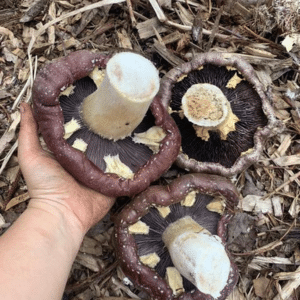
If you are interested in cloning your favorite mushroom variety, you can do so by using a small piece of the fruiting body to clone the mycelium on agar. This process involves taking a small piece of the fruiting body and placing it on agar, which is a nutrient-rich gel that promotes the growth of mycelium. Once the mycelium has grown on the agar, it can be transferred to a substrate to grow new fruiting bodies.
If you are wanting to try clone a mushroom, you will need to follow a sterile process to obtain a piece of tissue from the center of the mushroom, where no contaminants are able to penetrate. Do not cut the mushroom as this will draw potential contaminants in from the outside of the mushroom. Work in front of a HEPA filter or in a still air box (SAB) and tear the mushroom in half by pulling it apart from opposite ends of the mushroom. Use sterile equipment to transfer a small piece of tissue from the center of the mushroom onto agar. You will see mycelium spreading from the small piece of tissue over the next 1-2 weeks.
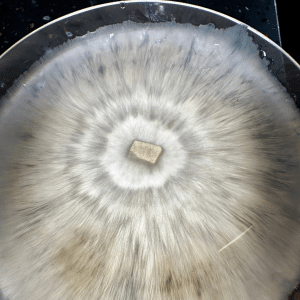
It’s important to note that not all types of mushrooms will regrow in these ways, and the conditions needed for regrowth can vary depending on the species. Additionally, it is important to properly identify any wild mushrooms that you may find and to only consume mushrooms that are safe to eat.
In conclusion, mushrooms can continue to grow and thrive even after being harvested. Adding harvested mushrooms to your compost can enhance the decomposition process and provide nutrient-rich soil. Burying harvested mushrooms in your yard can also allow for the mycelium to continue to grow and produce new fruiting bodies. Lastly, cloning your favorite mushroom variety is possible by using a small piece of the fruiting body to clone the mycelium on agar. With the right conditions and precautions, mushrooms can continue to provide endless opportunities for growth and exploration.
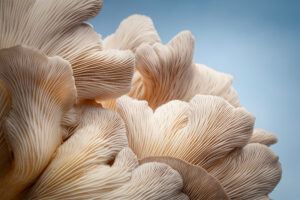
Mushrooms are a popular ingredient in many cuisines around the world, loved for their unique texture and earthy flavor. While many of us may have heard the term “harvesting mushrooms,” it may not be entirely clear what this process entails and whether or not mushrooms continue to grow after being harvested. In this blog post, we’ll explore the answer to this question in detail.
To begin, let’s first discuss the process of harvesting mushrooms. When mushrooms are ready to be picked, they are typically cut off at the base of the stem. This process is done carefully to avoid damaging the rest of the mushroom or the surrounding substrate and mycelium. After being harvested, mushrooms are then sorted and packaged for sale.

The short answer is that once a mushroom fruiting body has been harvested, it will not continue to grow larger. This is because the mushroom is a fruiting body, similar to a fruit on a tree. Just like how an apple will not continue to grow once it has been picked, a mushroom will not continue to grow once it has been harvested.
However, it’s important to note that the mycelium, which is the vegetative part of the mushroom, can continue to grow from the mushroom after the fruiting body has been harvested. This is because the mycelium is the part of the mushroom that is responsible for absorbing nutrients and breaking down organic matter. In fact, the mycelium can continue to grow and produce new fruiting bodies under the right conditions.

In this blog post, we will explore three ways that mushrooms can continue to thrive after being harvested: adding them to compost, burying them in your yard, and using a small piece of the fruiting body to clone the mushroom/mycelium on agar.
Adding harvested mushrooms to your compost is a great way to enhance the decomposition process. This is because mushrooms play an important role in breaking down organic matter and returning nutrients to the soil. By adding mushrooms to your compost, you are providing a rich source of nutrients for the microorganisms that help break down organic matter into nutrient-rich soil. Placing mushrooms into your compost triggers the mushroom into a vegetative state, meaning that mycelium will grow from the mushroom, provided that there is adequate moisture. For example, if you were to leave some scraps of oyster mushroom in your compost bin that receives coffee grounds and other waste, you would notice that the mushroom pieces would look fuzzy after a few days. This fuzz is actually the mycelium of the mushroom and this mycelium would be responsible for speeding up the decomposition in your compost.

Burying harvested mushrooms in your yard is another way that you can continue to grow mushrooms. The mycelium that produces mushrooms can continue to grow and regenerate under the right conditions. If you bury harvested mushrooms in an area of your yard with the correct nutrients and moisture, it is possible for the mycelium to continue to grow and produce new fruiting bodies after a few months. If you choose to do this, find a spot that does not receive direct sunlight, or find a spot that is shaded by plants. Add wood mulch to the soil for wood-loving species or manure/compost for manure-loving species. Keep the area moist and you may just see mushrooms popping out of your yard in Spring/Fall.

If you are interested in cloning your favorite mushroom variety, you can do so by using a small piece of the fruiting body to clone the mycelium on agar. This process involves taking a small piece of the fruiting body and placing it on agar, which is a nutrient-rich gel that promotes the growth of mycelium. Once the mycelium has grown on the agar, it can be transferred to a substrate to grow new fruiting bodies.
If you are wanting to try clone a mushroom, you will need to follow a sterile process to obtain a piece of tissue from the center of the mushroom, where no contaminants are able to penetrate. Do not cut the mushroom as this will draw potential contaminants in from the outside of the mushroom. Work in front of a HEPA filter or in a still air box (SAB) and tear the mushroom in half by pulling it apart from opposite ends of the mushroom. Use sterile equipment to transfer a small piece of tissue from the center of the mushroom onto agar. You will see mycelium spreading from the small piece of tissue over the next 1-2 weeks.

It’s important to note that not all types of mushrooms will regrow in these ways, and the conditions needed for regrowth can vary depending on the species. Additionally, it is important to properly identify any wild mushrooms that you may find and to only consume mushrooms that are safe to eat.
In conclusion, mushrooms can continue to grow and thrive even after being harvested. Adding harvested mushrooms to your compost can enhance the decomposition process and provide nutrient-rich soil. Burying harvested mushrooms in your yard can also allow for the mycelium to continue to grow and produce new fruiting bodies. Lastly, cloning your favorite mushroom variety is possible by using a small piece of the fruiting body to clone the mycelium on agar. With the right conditions and precautions, mushrooms can continue to provide endless opportunities for growth and exploration.


Learn how to grow Shiitake mushrooms using the Myterra Labs
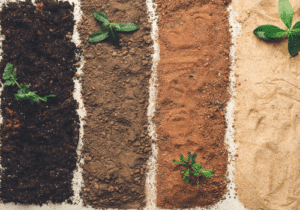
Selecting the right substrate is a key element in successful
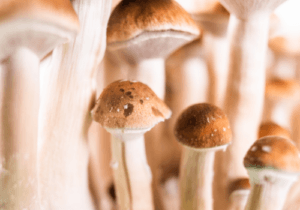
Welcome to the enchanting realm of our All-in-one Grow Kit,
© 2023 Myterra Labs. Designed by Laura Ramsay. Developed by Info2grow Media Services.